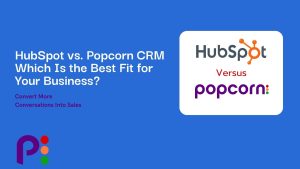Introduction
Whilst there are definite benefits to email marketing, email marketing cannot be used alone for lead generation. This isn’t necessarily a bad thing: it encourages you to expand your range to other channels to increase inbound marketing—and that can’t hurt.
Vanity Measures
The main problem is that open rates and click through rates are “vanity measures”. In the marketing world, these mean statistics that look satisfying to have, but don’t really translate into helpful actions, such as conversions. This isn’t to say that none of your mailing list are ever going to become customers. It does happen. But you cannot base your entire marketing strategy, and therefore your business, on these numbers.
As a small business, it can be tempting to only use your email for lead generation tactics. After all, marketing costs you time and money that you just don’t have. But you need real statistics that give you a better, wider picture, in order to make the right decisions.

Lead Generation: Finding the Big Picture
As such, you need to see email marketing in a wider context. If you’re getting good results in your email marketing, you’re likely doing the right things that will get you good results across other channels too—for example social media, SEO, etc. Because these have less vanity measures, these are where you should be concentrating.
The same is true of the opposite: if your content isn’t engaging enough, and you’re not reaching enough people, it’s probably the case that your other channels are doing pretty poorly too. And if you’re not getting meaningful engagement, then you can’t be getting conversions.
Lead Generation: Window Shopping vs Sampling
Another great way to view email for lead generation is by thinking of your business as a shop. Your business may actually be a shop—but this goes for every business in every industry.
Sending an email to a potential customer is the same as having, for example, a deal you’re offering on a poster in the window. They could read it, but you have no way of knowing if they’re interested or not. They could simply be waiting outside your shop to meet up with a friend, and have no intention whatsoever of stepping inside your doors.
If they’re interested, they might read another offer you’ve displayed. Then, eventually, they might step inside. This is the same as someone visiting your website, or clicking a link from an email you’ve sent. They’re having a nosey around, but they’ve not confirmed they want to buy something from you. This is where you can start a conversation with them, whether it’s non-brand related or not. If they don’t respond well to an attempt to sell—‘Could I interest you in a sample?’—then you can still go back to a non-brand topic.
When they get to a shelf, or ask you directly—it’s clear they want to engage. This is the equivalent of having a prospect look at your pricing plans, or click on a Call-To-Action, or book a demonstration. This is where the real selling begins, and you know the prospect has real potential to become a customer.

Lead Generation: The PRM Approach
Here at popcorn, we call this the prospect relationship management approach. You’re looking at each contact as an individual, not another lead amongst many.
You need to look past the vanity measures and watch where your recipients are going. Are they clicking onto your website from your email? Do they like your Facebook posts? Do you message them personally? If they’re just opening your emails and doing nothing else, then it’s not worth your time. They’ll make the move when they want to.
By looking at your contacts as individuals, you can identify where they are in the buying process and nurture them to eventually convert them into customers. Use your knowledge from the customer buying cycle, and your own information about who they are and why they might buy from you. Encourage them to interact with you on multiple different platforms.
Lead Generation: Foundational, but Conditional
With this approach to email marketing, you can see why email marketing can be used as a lead generation tactic. It is a good indicator of where your individual prospects are in the buying cycle—whether they’re worth extra attention, time and money. In this, email marketing becomes a foundational aspect of your lead generation, but in the context of everything else you’re sending. It all has to work together to bring those prospects to your door. And when it works, it works brilliantly.
Enjoyed this article? Comment below or read through our blog for more sales and marketing insights.











